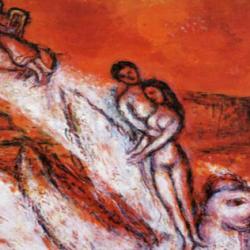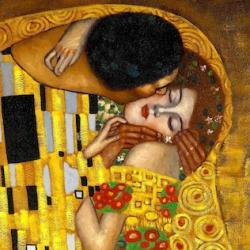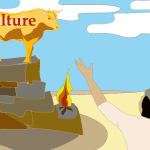The Song of Songs includes two full wasfs , poems that enumerate and commend the beauties of the Bride’s body (another wasf of the Bridegroom also appears in chapter 5). Though similar in form, the two differ at a number of points. In the first, the Bride is still veiled (4:1, 3), while in the second the veil has been removed (7:1-9). The progression between the two is not only from veiled to unveiled; the progression is also part of an overall theme of the glorification of the Bride.
In the light of the last theme, it is intriguing to note what parts of the body are mentioned in the two poems.
The first lists eight parts: 1) eyes, 2) hair, 3) teeth, 4) lips, 5) mouth, 6) temples, 7) neck, 8) breasts. The second list has ten items: 1) feet, 2) hips, 3) navel, 4) belly, 5) breasts, 6) neck, 7) eyes, 8) nose, 9) head, 10) locks. The numerical progression reinforces the glorification theme: With the Bride unveiled in all her glory, the Bridegroom finds more to commend and celebrate. The lists differ in their order. The first begins with the eyes, and circles around the face for the most part, and the Lover’s gaze gets only as low as the Bride’s breasts. The second list is much more rigorously organized. It begins at the feet, and moves upward to the top of the head, to the locks of hair that capture the king. Five of the body parts are below the breasts, which is consistent with the fact that the Bride is now unveiled, unclothed. He can now see and delight in what was formerly hidden. The ascending order of the second wasf also emphasizes the Bride’s monumental height, which is explicit in 7:8-9, where the Lover compares her to a tree. Before, he was gazing at her face-to-face; at the end, he seems to stand at her feet gazing up at the awesome sight of her and longing to climb to the clusters that he sees up the trunk.
Though both wasfs describe details of the face, they differ in particulars. Several features are common to both poems: eyes, neck, hair/locks. The first focuses on the Bride’s mouth – teeth, lips, mouth. The second mentions the Bride’s nose for the first time in the Song (as noted by one of my students, Amanda Perry). And this raises a question: Assuming that the two wasfs depict the Bride Glorious becoming the Bride More Glorious, how does the move from mouth to nose fit in? How is having a stately nose more glorious than having scarlet lips and lamb-white teeth?
Noses are prominent in the Bible (despite by efforts, I found it impossible to write that sentence without a pun; apologies). The nose is where Adam receives life from God, where the curse is focused (“sweat of the nose”), where the fire of the Lord’s wrath burns, where the Spirit comes in and out. The Beloved’s nose is no doubt related to that whole line of symbolism. But the main significance of the Bride’s tower-nose is found in 7:8, a second use of nose ( ‘af ) in the Song. In that verse, the Lover wants to ascend to the Beloved’s breasts, but also to climb up to her nose, because the fragrance of her nose is like apples. Earlier the Lover was an apple tree (2:3) who gave the Beloved refreshing apples (2:5). Now the Bride herself has apple-breath, breath that gives life to the lovesick. This new Eve doesn’t have an Adamic nose that merely receives the breath of life; she has a nose fragrant with the breath of life, a nose that gives new life to her Lover. She has become monumental, a cosmic bride like the Moon. She has also become a tree of life, her fragrance a breath of life.















